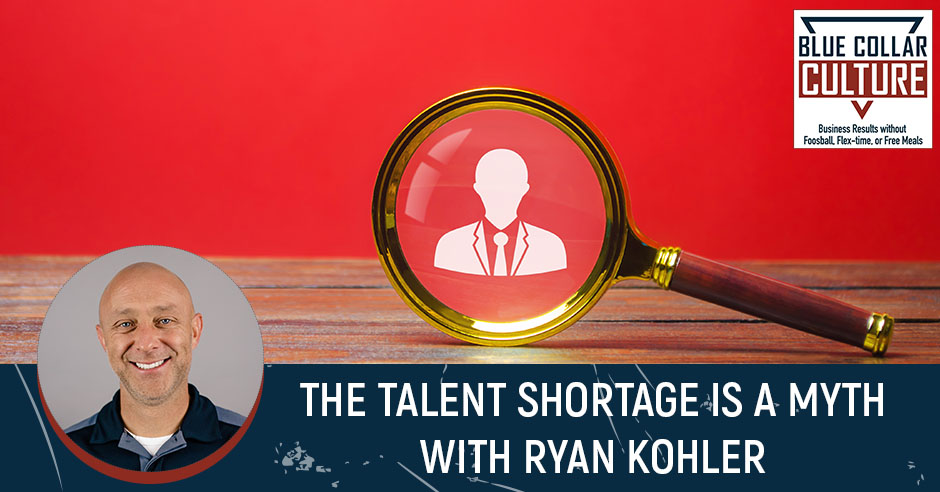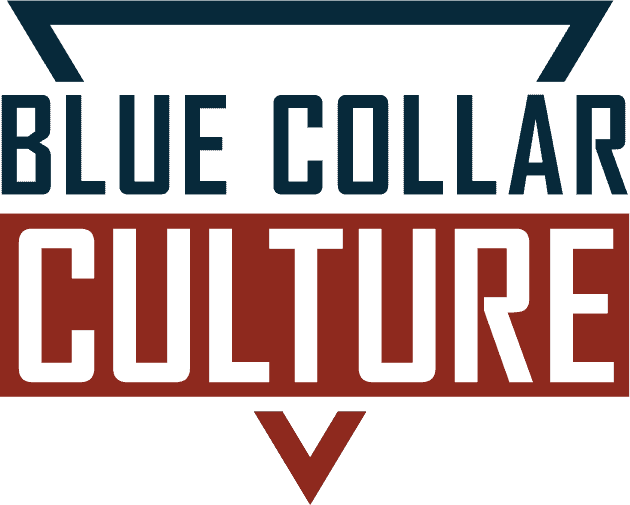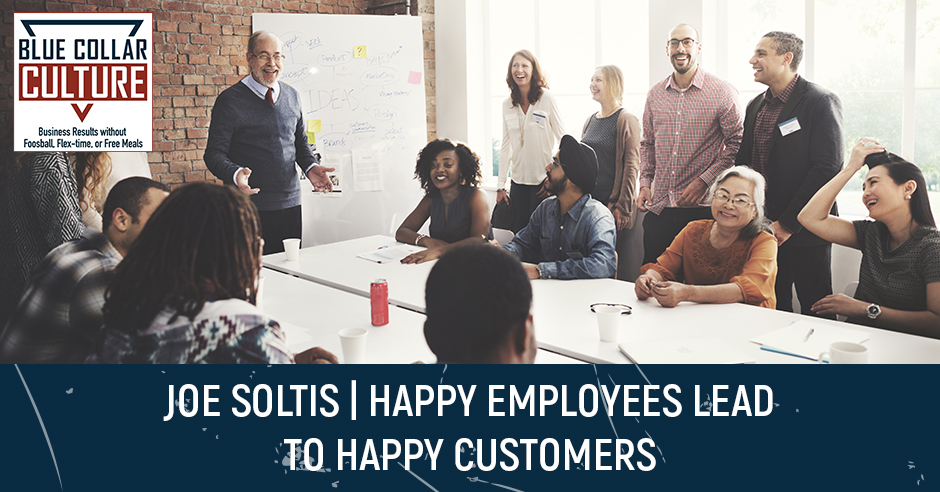
There’s an entire concept that there are no applicants looking for a job right now. They’re saying that there’s resignation and other issues in the workplace. But what if it’s not true? What if it’s truly possible to hire great people with the right techniques? Ryan Kohler joins this conversation with host Ryan Englin on the myth about talent shortage. Ryan Kohler is the founder of one of the most popular applicant-tracking systems, ApplicantPro. He emphasizes that the applicant tracking system is critical to managing a good recruiting pipeline, especially for small business owners. Learn how you can think differently if you’re struggling to hire better people.
—
The Talent Shortage Is A Myth With Ryan Kohler
As you probably know, I am super passionate about helping small businesses hire better people faster. Our proven process, the Core Fit Hiring System, is something that no one else is doing in the marketplace. It’s one of the biggest reasons that it works so well. People always ask me what the best part of our system is. What is it about our system that makes it so different? It’s a combination of using the right tools well and putting in a process that your team can manage for you. One of those tools, which I’m going to call the cornerstone tool of our system, is the Applicant Tracking System.

I am so excited about our guest because he is the founder of one of the most popular applicant tracking systems out there for small business owners. I’m super excited for you to know him and learn about this amazing tool in some ways that you can think differently if you’re struggling to hire better people. Ryan Kohler with ApplicantPro, welcome to the show.
Thanks for having me, Ryan.
We could probably geek out on this a lot because I do believe that the applicant tracking system is so critical to managing a good recruiting pipeline, especially for those busy small business owners, those ones that wear 27 different hats. That recruiting hat is the one they dread putting on every single day. It’s the last thing they want to do.
One of the things that I want to know is what do you believe is one of the biggest myths about recruiting? It seems to be the number one issue in America. Everybody is saying that there is a hiring shortage, a great resignation, and all these other things. What do you think is the biggest myth that people are talking about?
Clearly, the entire concept is that there’s a shortage, there are no applicants, and nobody wants to work. I’ll tell you the number one myth. The government is paying people not to work. The reason why there aren’t applicants is that the government is paying people not to work. Even if it’s true, there’s nothing you can do to solve that if it was true. Anything that is a boogeyman or a big outside influence, we’re giving up our power.
Imagine if somebody is like, “There’s a great lead shortage.” Your marketer came to you and said, “There’s a shortage of people looking for our service.” You’d fire that person. If it were real, you’d shut down your company. If there were a shortage of leads, we would throw money, resources and creativity at it to solve it because we know that’s all that matters. If we can’t solve that problem, we’re screwed.
If HR, an accountant or a random person says, “There’s a shortage of applicants,” we threw up our hands, walk away, and don’t even try to solve the problem. Where America is at, by and large, is very few companies are trying to solve the problem. They’ve accepted that it’s out of their control. That’s where we’re at. Everything is a boogeyman.
It used to be, “Unemployment is 3%. That’s why we can’t get enough workers. Immigration laws are being put in place, that’s why we can’t get enough workers. There’s a talent shortage.” All those things could be true, but talking about them doesn’t do anything because it doesn’t lead to action, which was what you set up. We need stuff that leads to action. Talking about the talent shortage doesn’t lead to action.
Every job offer advertisement has to explain how this is an upgrade to a target audience. Click To TweetIt’s easy to blame others, put your hand on your forehead and play the victim. When I first started doing this, I was researching a ton about how labor shortage is perceived. I found an article from 1962 talking about the labor shortage in 1962. If there wasn’t a massive reform, we were going to have a labor shortage. At the time, they were talking about typists or typewriters. There was a labor shortage there. This isn’t new. We just find different things to blame it on.
One of my top five books is The Obstacle Is the Way. I’m a big stoic. Anything stoic from Ryan Holiday is going to be what I’m after. It’s one of those books that transformed me as a business owner. There’s the story in there of the king that hit a little bag of gold under a giant rock that he stuck in the middle of the road. He sat back and watching what the people the townspeople would do. Some of them came, complained and turned away. Some of them complained and worked their way around. One peasant came, left, came back with a lever, lifted the stone out of the way, and found the pot of gold.
The theory is that while there are obstacles and it sucks, and it’s hard, you have to work around them. If you’re the person in the marketplace that figures out how to make that obstacle or overcoming at your superpower, you suddenly have a competitive advantage over all the people that are like, “It’s so hard to get customers.” They do just enough to solve it.
Those guys are okay, but the person who’s like, “I will be the plumber, that lead generation is my superpower,” that guy has a competitive advantage. Most of it comes from being willing to lean into the problem and say, “I’m not just going to solve this for today. I’m going to solve this going forward. I’m going to create a better system and approach. I’m going to do it differently than everybody else.” That is usually where the superpower comes in.
I’m a contrarian. You get a pool of water, and the fish are going one way. I’m going to go the opposite way and prove to you how the opposite of a good idea can also be a good idea. It can work. If you think about the labor shortage concept, we will get to the point of a labor shortage until we bring technology to solve it.
If it is big enough, then you will see technology coming to play to solve the problem. Therefore, you know that this business is easy. If I have a labor shortage and there are no applicants for my job, if I can’t solve that problem, then I better figure out how to make my employees be more efficient using tech, changing the job roles and the structure. Those are my only two options.
Either I figured out how to carve out and pull the talent I need from the crowd that’s out there by out competing, or I better figure out how to make my employees the most efficient possible. Those are the only two answers. If you look through history, each time there will be a shortage, technology will come in to make the workers more effective, or it wasn’t a real shortage and therefore, the businesses were just complaining.
In my personal opinion, I don’t think that America’s employers are in enough pain yet to solve it using either one of those. Technology costs money and it requires change. Nobody likes to change. On the other side, it’s process improvement, efficiencies and holding your people accountable. When the economy is doing well, businesses are coming in and you’re dumb, fat and happy, it’s easy to ignore all these inefficiencies that we’ve created in our businesses. It requires change. There has to be enough pain for people to want to make that change.

I would add one concept to it. I don’t know the change where American companies aren’t seeing enough pain to spend the money. I even think the whole technology costs money is a misnomer. We haven’t reached enough pain where we, as companies, will reevaluate our approach and paradigm. When you reevaluate the paradigm of how things are done, that’s normally where this obstacle becomes a superpower.
We were talking about restaurants. There is a concept, a given paradigm, that is best practiced up. People walk into the restaurant. They wait in line and engage a real live human there. It’s our first interaction, and the businesses have set the stage where that’s going to be how they build this relationship. The biggest choke point for ordering food is that one point. If you think about it, everybody is complaining that there are not enough workers to do that job, but I can tell you as a consumer, I don’t want that job done.
I would rather order with an app, even if I’m still sitting in your location. If you make that pitch to the restaurant owners, they may say, “That costs too much money.” In all honesty, that option is off the table because it doesn’t fit our paradigm. This is how it’s done. It’s how everybody is doing it. This is herd mentality. We assume if it was a valid solution, lots of other people before us would do it because we’re not that smart and they’re smarter. In actuality, there’s no data that says it will work.
There’s a book I’ve been reading. It’s like, “We’ve traded out all the magicians and witchdoctors for economists and engineers.” What it meant was we no longer believe in magical solutions. We only do things that have been proven to work. What happens when new ideas haven’t been proven yet? They don’t get adopted. In the blue-collar world, if we follow what everybody is doing, we’re leaving off the table the new stuff. In the tech world, we crave being first. We try new stuff even if we know it’ll break just to do something new.
The money will always pay back in technology. Nobody can build you tech that goes against the given paradigm if you’re not willing to get outside of your paradigm and say, “Maybe there’s a different way to service plumbing customers or do some of this stuff.” COVID forced parts of that, but why wait for COVID? As a business owner, if you want to beat your competition, having a different paradigm than everybody else is the number one starting point that opens up the door to all kinds of new ideas.
We need to start treating people better so we can hire great people faster. Click To TweetIt’s changing the way they think about it, their mindset and their approach. You mentioned restaurants and the fast-food quick-service model. Even sit-down restaurants have changed. You no longer have someone who’s there to take a food order, deliver the food and refill cups. They’ve got to be the mask police and the vaccine police. They’ve got to be these enforcers, and that’s not what servers are accustomed to doing. You’re seeing this mass exodus of servers leaving the restaurant. It’s because, “This is not why I got into this. It’s like a fight with people so I could kick them out of the restaurant. I want to serve people.”
It’s not just that that’s driving them out. There’s also something pulling them away. During COVID, we laid off all these restaurant workers. We thought they were sitting around and getting paid by the government. It was easy to hear that story and believe it. In actuality, the unemployment of teenagers, which is 16 to 25-year-olds dropped back down to almost normal within four months. It was only a couple of percentage points above normal when everybody opened back up.
They assumed all these people were sitting around not working. What happened was they went and drove for DoorDash and they said, “This is a way better experience for me as an employee. I can pick when I want to work and how I want to work. I don’t have to swap shifts. I can just clock out.” All these McDonald’s employees were suddenly getting tips. Not just the mask police. They didn’t have to clean up the table. They didn’t have to do any of that.
My DoorDash driver barely even talks to me. They walk in, drop the thing and they’re out. It was a better experience for them. The restaurants are going to have a hard time bringing those people back because they’re no longer desperate enough to do that job at that pay. If you think about how those paradigm restaurants were forced to put a QR code on the table with their menu, what percentage of them realized that if I were staring at your menu, I’d most likely want to order?
There should be an order button there, but it’s not there. Thanks for not printing menus and passing COVID that way, but as a consumer, you threw me into a buying situation but isn’t letting me buy. Instead, you’re going to pay a labor person to come and take the order when I want to hit ‘Buy Now,’ check out and be done.
I’ve always wondered why I can’t do that. We’re starting to see it a little bit more, but it’s not being adopted at the level we need to. You said something I want to dig into. I want to talk a little bit about the ATS and how this tool is so amazing for these business owners that don’t even know what one is. I’m going to say the majority of our readers have no idea when I say ATS.
You mentioned something about the consumer’s perspective and thinking about what the consumer wants. One of the things ApplicantPro has done well is said, “Recruiting is not a situation where the employer gets to dictate and the employer just gets to do.” We’ve got a job seeker out there and consider what they want. You have done that. If you could, tell me a little bit about how you got started in ApplicantPro, what the tool is, how it works and why you are so different.

From the time I was ten years old, I wanted to be rich. I started down this pathway. My parents both got sick within a year of each other. This concept of being self-sufficient became a thing for me. As I tried different things, worked in small businesses, tried and found my groove, I landed at a tech company where I was an accountant. I have an Accounting degree. I ended up at this tech company where I was able to see what was going on and how to get into marketing.
At the same time, I owned a blue-collar parking lot sweeping business. I had one employee. That’s how much it would take to run the parking lot sweeper, and I had twenty employees during a given year. Do the math on that. I only have one employee at a time, but I went through twenty of them. I was asking them to go out at 3:00 AM all by themselves, sweep a parking lot and make sure it hit a certain quality level. Most likely, they didn’t think their boss would ever see it. There was nobody to QC it and check it down.
I went through tons. That was probably my first real hiring experience going, “This sucks. This is a lot of work. These guys are not like me.” This is our first takeaway. I grew up on a farm. I wake up every morning to milk the cows at 3:00 AM. I was trained for this for a long time in my life. I own the business, so I care about that quality enough. Nobody needs to check my quality.
When we assume that an employee is like us and you’ll hear this when you ask a blue-collar business owner, “What’s your PTO strategy?” They’re like, “I don’t get paid when I’m not working. Why should they get paid?” It’s because they’re the employees and you’re the business owner. When you sell your company, are they going to get the payout? No. That’s because you have a different role.
Immediately, what it does is we view the world through our lens of who we are, but that’s not how you achieve superstar or competitive status. The very first thing they teach us product managers is you need to get in the customer’s mind. You hear this, “The customer is always right.” In marketing, you focus on your target customer because we aren’t the buyer. A plumber is not the buyer of plumbing services because he would do it himself.
The buyer is somebody who can’t even understand. It’s somebody who isn’t handy and doesn’t do those things. You immediately set the stage up, “I am not like them. Therefore, I need to figure out where they’re at, what they’re thinking and what they care about.” Most people you explain that to are like, “That totally makes sense when it comes to marketing and selling to my customer. I’m not my customer.”
If you then say, “That’s the same thing as hiring. You’re not the employee. What you would want in a job, you would never want to hire me as an employee.” I took an assessment once at this trade show I was at and the person is like, “Nobody is ever going to give you a job.” I’m like, “Pretty much. They don’t want to hire me but because of that, I would want to hire me.” Therefore, I don’t know what the people want that I want to hire. I’m going to have to sit in their shoes.
Employee referrals are very important. If your workplace is a crappy place to work, your employees aren't going to refer. Click To TweetThere’s this book. I read it when I was probably five years in business. Some people are selling assessments that said, “We’ve got all these clients. We want you to build some hiring software.” I’d been building websites and web directories. I’m not even programming. I have a part-time mom who’s a developer who works for me. I’m like, “We can totally build some hiring software.”
We’d never even logged into another applicant tracking system, which is what we were building. We’re building a tool to track applicants, capture the application online, let the HR or business owner look at them and leave notes and stuff to the point of hire. We’re running assessments or background checks along with it. I never even logged in and looked at one before. I just unpacked the problem and started solving it.
That was many years ago. I was paying that employee $1,200 a month on salary to work part-time for me. We ran for two years before we hit breakeven. The total investment was $40,000 at the money. I was making it a full-time job while I was side hacking and running the side hustle to build it up to the point where I quit. Luckily for me, the fact I was naive was my superpower.
A lot of times, business owners, especially in the blue-collar space, they’re technicians. They were sick of working for somebody, so they quit their job and started their own business. They’re great at whatever that service is that they’re going to provide. It also means they’re generally not great at marketing, sales, hiring, admin and accounting. You turn all those things because they were just the technician.
Their superpower in their head might be that they’re the experts. If they stick on that for too long, it’s possible they become too blinded by the ballgame stuff because their customer isn’t an expert. Being naive can be a superpower just like being an expert is. That’s where we were at. I didn’t know any better. I didn’t know what the tracking software was supposed to look like. I didn’t know it was supposed to take six months to set up a new client.
I assumed that if I could make it fast, it would be fast. I didn’t know that I wasn’t supposed to help with sourcing. You’re not supposed to do that as an applicant tracking system. That’s a job board function. Sometimes being naive lets you blast through the whole inside-the-box and out-of-the-box thing because I didn’t have a box. I would go wherever the problem would take me.
When I got started in my marketing journey, before I started doing all of the hiring and recruiting, I never worked for an agency. I never had done it in someone else’s way. I went out and solved the problem. I totally resonate with your story, and I’m sure a lot of our readers do too. One of the things I like to do is talk about some takeaways for our readers.
I know that with an applicant tracking system, we could probably have a whole series of all the cool things that you could have in your business from automation to pre-screening people and automatically eliminating people you don’t want to talk to and some of these cool features. The applicant tracking system is a tool.
You give a hammer to my five-year-old and it’s going to cost me money. You give a hammer to a master carpenter, and it’s going to make you a lot of money. It’s still a tool and it’s got to be used correctly. I know you’ve got a couple of pointers or some tips for our readers on how they can get the most out of not just an applicant tracking system but their recruiting results. Could you share those with us?

I like your piece about it being a tool. Let’s apply it to something easy to think about. It’s a funnel that you’re going to stick in your trucks and put gas in. You could have a fancy funnel. You could have one of those that you can bend all over the place. Clearly, if there are holes in it, we have a problem. If you think about this like it’s a funnel, you’re throwing gas in your truck.
We have two core themes that are the driver. One, the funnel is worthless if you have no gas. If you’re not dumping more gas at the top of the funnel, you’re never going to fill the truck up. You could buy the fanciest funnel on the face of the planet, but without gasoline, it does nothing to get the job done, which is to drive your truck.
When we talk about hiring people, step one is sourcing and step two is screening and selection. If you don’t have a big constant flow of applicants into the funnel, it doesn’t matter how fancy of a funnel you have. There is no top activity. That is usually the very first part. Where we get messed up with this is we think it’s all hiring. We can’t start sourcing and tell we’re ready to hire because we’re going to have to put the money in that hiring that’s a big investment.
As a business owner, you should always be sourcing candidates for your most important jobs. That is a fairly cheap activity. You don’t have to hire them. You don’t have to be ready to sell and fulfill the service for every lead you get. It doesn’t mean you stop getting leads. When you have enough customers for the month, you don’t shut off your website or your Facebook.
You don’t put up the closed sign, “Don’t come back today because we already have enough customers for the day.” When it comes to hiring, that’s what we’re doing. As soon as we’re staffed up, we rip down all the help wanted signs. We pull our ads down. We shut off our career site and we’re like, “Until we’re ready to hire again, shut it all down.” That’s not what has to happen.
If you think about hiring like you’re running that funnel, you have to have stuff flowing in. Number two is funnels are constrained by two types of activities. 1.) Are you creating friction? How much friction is being created? 2.) How much motivation, the positive of that? Think about this like it’s Stephen Covey’s emotional bank account. Once somebody applies, I’m either making deposits between me and this job seeker or taking withdrawals.
If I want to make a job seeker take an hour-long test, that’s a withdrawal. I better have made a deposit before that or they’re not going to do it. Each step of the way, we have this industrial revolution mindset of breadlines. “You’re lucky I’m giving you a job. I’m paying you. Therefore, I’m the customer.” That’s not true anymore. While you might feel justified in approaching it, you can be justified right out of business.
The fact of the matter is you are the one selling the job seekers and the customers something. You’re selling them the experience of working for you. Once you have that idea set in place, you’re like, “Will I create friction or extra hurdles for my customers to jump through to pay me?” If I did create those, I would assume it would mean I would get fewer customers. When you create extra hurdles that job seekers have to jump through to get to you, you better have made a deposit and have this positive balance running, or they won’t do it.
It’s not evidenced that nobody wants to do my job. It’s simply proof that you created friction without enough fuel to get them over the hump. We’re not Google. If I was Google, Apple or Facebook, I could make you walk halfway across America to apply for a job with me. The value of getting that job is so high that anybody would do it. I’m Ryan at ApplicantPro. I’m a big deal inside of Eagle Mountain, Utah, with a population of 50,000, but inside the Utah tech community, I’m nobody. I can’t act like I am somebody or people are going to think that I’m stupid. They’re like, “That guy thinks he’s all that.” That’s where you’re at as an employer.
Figure out how to make employees be more efficient using technology, changing the job roles and structure. Click To TweetI’m sitting here shaking my head up and down. I always tell people when we’re building out the recruiting funnel and building that for our clients, “How long do you think you should wait before you reply to an applicant?” “When I get to it,” is usually the answer. We talked to somebody. They wait three weeks because it feels like that’s the right number.
They’ve got a firm that’s helping them source. They batch them every three weeks. What would you say to your sales manager or someone on your sales team if a lead came in and you’re like, “That was a big lead. What happened to it?” “We’ll get to it in a couple of weeks.” You’d think they were crazy. For some reason, it’s okay to treat an applicant that way. From what I’m told, it’s a lot easier to get customers than it is to get employees.
We need to flip the script and start treating these people better. I love what you said about making enough deposits. We were talking to somebody and they’re like, “We’re not getting any applications.” I’m like, “Let me look at your job ad.” On one of the job boards, there were 37 questions just to apply. Who’s going to do that? These employers have conditioned job seekers.
One of the things I talk about in a lot of my talks is that we have responsibilities as employers to fix this. We have conditioned job seekers to know that if they apply for us, there’s probably a 2 out of 3 chance they’re never going to hear a thing. What incentive do job seekers have to spend time jumping through your hoops and filling out your full application, when they know that the majority of the time is going to go into some deep, dark abyss and they’re not going to hear anything anyway? It blows my mind that this is how we think about this.
It blows our mind as outsiders that are looking at it differently. If you think about the product, the new idea, the adoption cycle, it’s like a bell curve. HR tends to skew on the skeptic side, and that pulls back or holds back the new creative thinking. This is handed down DNA from the industrial revolution. You watch The Men Who Built America series from the History Channel.
As an entrepreneur, you’re like, “I am not super excited that I came from a long line of monopolistic, aggressive entrepreneurs that were fine beating their employees down and beating them back.” Later in their life, they took all their money and donated it to charity, so their names are on all these buildings. At the end of their life, it looks like they’re great people, but during the initial phases of them going to market and creating monopolies, they were not nice to employees at all. They were a cog in the wheel, a tool and a resource.
Right off the bat, we call it a requisition. In bigger companies, HR has a manager fill out a requisition, “I’m trying to buy something.” That’s what you do. What a job requisition is, “Here’s my list of the features I want.” That’s the very first takeaway from a paradigm standpoint. The ATS is a tool. It’s going to amplify your paradigm. If an ATS or a job board is a giant megaphone that cheerleaders use and if you want to make sure that you have a good result, you better make sure you stick the words in her mouth because whatever she’s about to shout is going to be broadcast everywhere. That’s from a business owner standpoint where you have to start.
The first trigger is to switch from what it is I’m looking for to who. That’s what I always do with my clients. It’s the very first thing I want to know. Who would you clone into this job? Do you have somebody that you love? It’s two sides. You love them doing the job and they love doing the job. It’s those two things.
Our very first concept is “who.” If you don’t nail down the who, we can look at them and say, “I was thinking they a Bachelor’s degree but they don’t. I was thinking when they started working for me that they had ten years of sales experience but they had none.” With that who, we can then validate against our assumptions of what we’re looking for.
What we’re saying is, “I’ve identified my who. What did that person look like when they started doing the job for me?” If you take that one simple exercise, 50% of all jobs out there are overstating the requirements. Therefore, the whos or the people who love doing the job would never apply for that job if they had to do it again. They’re telling them not to apply. They’re telling them, “You can apply but we won’t interview you. We won’t select you.”
ApplicantPro has 220 or 230 employees. We’re a tech company. We’re 80% female and 70% part-time. When I first started, I was hiring these moms, I still am, returning to the workforce after having 3 or 4 kids. Their kids were in elementary school. The job titles they were coming from are piano teacher and swim club admin person. Almost none of them had any tech experience or had worked in the tech world. They’d never done a screen-share with GoToMeeting as a good example.
Clearly, my ads didn’t say that as I was pulling them in. I went back and reviewed our ads for those same jobs. It’s like, “Experience sharing a screen on GoToMeeting.” They had set the requirements as being what that person had now, not when they started with us, which immediately brings down applicant flow to only people who have been doing the job for five years.

Those people aren’t going to apply to that entry-level job in the entry-level pay. Over time, business owners will constantly have to fight increasing their requirements. While we would love to be constantly leveling up and hiring better people, if we aren’t also leveling up the experience of working for us, the pay, the benefits and all those things, then we’re setting the stage where we’re out of touch. That’s going to go up. You’re just out of touch.
I tell people all the time to hire people that are going to feel like they belong and they have a sense of community at your work. Gallup talks about their employee engagement survey. One of the biggest predictors is whether or not you have a best friend at work as to whether or not someone’s going to enjoy that. Where is that on the job ad? It’s not. Instead, we have this laundry list of skills because there was one guy at one time who couldn’t cut it and he didn’t have that skill, so we added it to the list.
It’s about hiring people or even creating these job ads. What is the bare minimum, the things you can’t or won’t teach? That’s it. If you can’t or won’t teach it, then don’t put it on there because that’s something you need to have. It kills me all the time when we’re like, “You’ve got to know how to use this field management software.” You’re going to teach me how to use it anyways because you’re going to do it differently than the last guy. Why does that even matter?
More importantly, if the entire industry is requiring that, then the entire industry is fighting over only the experienced candidates. As a business owner, as the David, not the Goliath, if all the Goliaths are going to fight over the people who have experienced doing that, the blue ocean of recruiting that I’m going to have to carve out is to pick a different problem. This bracelet around my arm reminds me, “Choose my struggle.” I’m going to choose the training struggle because the hiring struggle is hard.
I’ll be the guy who trains them on that. Let’s solve that problem. That seems like an easy problem. Record some videos and set up a learning management system like Trainual or something like that. Done and done. Academy of Mine has a web-based system for $50 a month or some BS like that. In one day of recording, I could have it all built out. I’ve solved the training problem. I can hire people that everybody else would reject because they had never used and done it before.
I’ve got this blue ocean of people that nobody else is going after. If we all target the same herd, we all target the same species, then we’re walking away from the blue ocean. The diamonds in the rough are what we’re looking at. I hire people, not resumes. That was always my theme from the very beginning. I want to know if you have the potential to do well at this job. Not if you have the knowledge and skills because I can backfill that.
Somebody has the potential if they fit my values and my culture and the whole a-friend-at-work thing. It has to do with you don’t know why your employees are working for you. Most likely, the reasons are very different than your reasons for showing up to work as the employer. 1.) You don’t know why they work for you. 2.) Your ads don’t tell people like them that story of why these people work for you.
The core principle that I have been testing that has finally rung home is think about the last time you bought a house or a car. It’s 1 of those 2 things. We all have experienced buying a house or a car. Most likely, you didn’t buy a house that was equal to the house you’re in now. Why would you box up all your stuff, your entire life and move to a new house? That’s a huge pain. Here’s the real takeaway.
You would never buy a house that’s a downgrade unless you were forced out of desperation. You would never downgrade your house. Take that concept to your employees. Nobody is going to line transfer from one job to another job for the same exact thing for the same exact pay. Why would they go through all that work? They’re not going to downgrade. Why would anybody downgrade their job unless they’re desperate? Last I checked, my goal in life isn’t to hire the most desperate job seekers. That’s not my goal.
Every job offer, and therefore meaning the ad, has to explain how this is an upgrade to a target audience. This is an upgrade for you. This is better than where you’re at. If you hate that, that means I need to know why you hate where you’re at now. I can position my job as the solution to what you hate, fear, frustrates, what your wants and aspirations are. This is Marketing 101 stuff of define your target segment, identify what their pains and wants are and create the solution to that.
If you’re working at a big company, this fits your users well. Think about all the reasons why people hate working at a big company. It’s the red tape approval. They only get to do this one little tiny job. They don’t get to see it all the way through. Their boss doesn’t understand what he’s talking about because he’s the middle management. It’s all about the metrics and data. It’s unfeeling and uncaring. The boss doesn’t understand the customer.
If you go read employee reviews, those are all the reasons why people hate working for big companies. Your job as a small business owner is to be the opposite and to be the answer, “We don’t have red tape. You’re reporting directly to the CEO. I know what I’m talking about. I’m not going to tell you to do something that I don’t personally understand,” which means it’s about you. Here’s the real question. Why doesn’t the ad talk about the entrepreneur?
The entrepreneur is going to have a bigger impact on a team of 10 or 50 than the actual job is. It’s going to have a huge impact on what their life is like working there. There are almost no ads. Even ads for an assistant or an entrepreneur don’t talk about what the entrepreneur is like, what it’s like to work with them, what their personality is like, what their values are like, what they believe and what they hate. It doesn’t say anything about it. Nobody will write a job ad that says it, but you write an ad because, “I’ve done it.” Everybody loves those ads. That’s what they want to know, “What’s it going to be like working for this guy?”
We can keep going with this. There’s so much here that I agree with you on, and I love hearing this. You talked about getting that ideal employee. That’s one of the things we do in our Core Fit profile. You talked about rewriting the job ad. That’s something we teach in our program. There are many alignments here but we’ve got to wrap-up. If people want to learn more about ApplicantPro, you’ve got some videos out there and some training as well. How do they get ahold of you? Do you have an offer for our readers?
They can go to ApplicantPro.com. There’s a blog on there. We are very dedicated to pushing out valuable content for free. My goal is that my marketing makes a bigger impact on the world than my product. What that means is I want people to learn how to do stuff and use it without paying me. If they want to use my tools to amplify their results, I’m totally cool with that. I’m not going to put out a single piece of content that somebody can’t take action and get value out of without giving me money, because that’s not where I’m at.
You can go hit up our blog on ApplicantPro. If you use LinkedIn, you can follow me there. I believe that ApplicantPro has a Facebook page. You can follow me there as well. As far as receiving the content, that is valuable. As far as what it looks like from a small business owner, for the most part, we try to be more helpful than do-it-yourself. I know the same thing in why we have so much alignment around it. We believe that the system is only as good as what you put in it. Your results are only as good as your ads. They’re not going to do anything else.
You have a job ad template too that people can download.
We have job ad templates. If people sign up, I’m more than willing even to write some free job ads. As long as I have one requirement on giving away, I give away free job ads any time I speak anywhere. I’m more than happy to give your readers a free job ad. I have one requirement. I will not write job ads that you will not post. The only commitment I want is you will post it and try it out. What I can guarantee is it’s going to look different than anything you’re using or anything you’re used to, so people don’t post it and they never see the results. We’re more than happy to write some free job ads for your readers for sure.
We’ll have them reach out for that. Ryan, thank you so much. I’ve enjoyed it. I know we could keep going. We’ll have to do this again sometime. For those of you that are reading, there are two takeaways. I want to repeat them again. Number one is to get that job ad out there. Stop thinking about this as an HR document, make it an ad, attract people to your jobs and then create a hiring and screening framework. That’s what it comes down to. Have a system in place.
This isn’t a situation where you wing it. You would never wing your marketing. Don’t wing your recruiting. Don’t give this to the least experienced person because they have more time for it. I personally believe that as owners, we need to be investing at least 30% of our waking hours that we are working in the business working on recruiting. This isn’t something that we can discount and say, “We’ll get to it when we get to it.” It’s something we need to put an effort into, especially if we want to change that paradigm that Ryan was talking about. Ryan, thank you so much for being on the show. I enjoyed it.
Thanks. I hope to be back in the future.
Important Links:
- Core Fit Hiring System
- ApplicantPro
- The Obstacle Is the Way
- Trainual
- Academy of Mine
- Blog – ApplicantPro
- LinkedIn – Ryan Kohler
- Facebook – ApplicantPro
- Job Ad Template
About Ryan Kohler
 Founder and CEO of ApplicantPro, a leading provider of hiring software for over 6,000 companies around the nation. As an entrepreneur working with thousands of HR professionals, I understand what it takes to bridge the gap between your organization’s vision and the goals of HR.
Founder and CEO of ApplicantPro, a leading provider of hiring software for over 6,000 companies around the nation. As an entrepreneur working with thousands of HR professionals, I understand what it takes to bridge the gap between your organization’s vision and the goals of HR.
I’m an HRCI and SHRM-CP Approved Provider devoted to sharing my knowledge and experience to help organizations of all sizes. I enjoy working directly with companies, managers, and HR teams to empower them to create a more strategic hiring process. To do this, I conduct free weekly webinars that provide HRCI & SHRM Continuing Education credit and present at SHRM events around the country.
If you want to learn more about what my team can do for your organization, reach out to me at ryan [at] applicantpro.com
Love the show? Subscribe, rate, review, and share! https://bluecollarculture.com/podcast/




 Joe is the Founder and CEO of ChoiceLocal, a digital marketing firm that serves franchise systems where the average client partner of ChoiceLocal gains $15.51 for every $1.00 in invested in marketing. ChoiceLocal is a local marketing firm specializing in marketing franchise systems. Their average client generates in excess of $15.54 in new revenue for every $1 invested in marketing.
Joe is the Founder and CEO of ChoiceLocal, a digital marketing firm that serves franchise systems where the average client partner of ChoiceLocal gains $15.51 for every $1.00 in invested in marketing. ChoiceLocal is a local marketing firm specializing in marketing franchise systems. Their average client generates in excess of $15.54 in new revenue for every $1 invested in marketing.